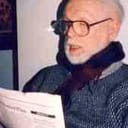Stay in the Loop
BSR publishes on a weekly schedule, with an email newsletter every Wednesday and Thursday morning. There’s no paywall, and subscribing is always free.
Yes you can (hire an architect)
Architecture: Five cents' worth
The Crash of 2008 put about 40,000 architects out of work, according to the American Institute for Architecture. But an innovative 29-year-old "architect" named John Morefield is thriving, according to a recent story in the New York Times. (I put "architect" in quotes, since Morefield lost two jobs in 2008 and doesn't yet have his license.)
Morefield had the bright idea to set up an advisory service at a farmer's market in downtown Seattle. Drop a nickel in his tin can, and you get his professional answer to any architectural question.
Is your bathroom too small? Do you want more space; want to add a second story or start that spring project? No matter what your needs, Morefield's advice comes for a nickel. The nickel leads, after a conversation on the spot, to his website.
Morefield spent some of his vacations from architecture school selling organic produce at food markets, which is where he got the booth idea. He fielded his booth at one such market over the Christmas holiday (market fee: $40 per day). The nickels go to a neighborhood food bank "“ 1,546 of them his first year at the booth, and 304 "digital" nickels at his website.
Morefield's goofy $100 booth (he says it needs a new paint job) got him a local news story. (What's more interesting and inspiring than a runaway economic and PR success in the middle of a recession?)
More important, the publicity brought him business. Right now, Morefield has 15 clients eager for his counsel. He made $50,000 his first year.
Now Morefield is working on an international website, www.creativecommons.com, where architects can swap new ideas internationally, show off their new jobs, and in general get help from a Washington business advice firm, C.A.S.H., which stands for Community Alliance for Self Help. The site gives its architect clients practical business tips: financing, taxes, profit forecasting and marketing (none of which essentials, Morefield notes bitterly, are taught in architecture school).
Morefield's website reveals him to be a very innovative thinker about architecture and the common man in our cultural democracy— at the opposite end of a trail that peters out with the spurious goal of starchitecture. He deplores the fact that only 2% of American homes are architect-designed. Developers and contractors dominate the scene. He says he looks forward to the day when all homeowners turn to architects for counsel.
The Times sees an innovative entrepreneur here. I see something much grander: the promising egalitarian future of American architecture.
Morefield had the bright idea to set up an advisory service at a farmer's market in downtown Seattle. Drop a nickel in his tin can, and you get his professional answer to any architectural question.
Is your bathroom too small? Do you want more space; want to add a second story or start that spring project? No matter what your needs, Morefield's advice comes for a nickel. The nickel leads, after a conversation on the spot, to his website.
Morefield spent some of his vacations from architecture school selling organic produce at food markets, which is where he got the booth idea. He fielded his booth at one such market over the Christmas holiday (market fee: $40 per day). The nickels go to a neighborhood food bank "“ 1,546 of them his first year at the booth, and 304 "digital" nickels at his website.
Morefield's goofy $100 booth (he says it needs a new paint job) got him a local news story. (What's more interesting and inspiring than a runaway economic and PR success in the middle of a recession?)
More important, the publicity brought him business. Right now, Morefield has 15 clients eager for his counsel. He made $50,000 his first year.
Now Morefield is working on an international website, www.creativecommons.com, where architects can swap new ideas internationally, show off their new jobs, and in general get help from a Washington business advice firm, C.A.S.H., which stands for Community Alliance for Self Help. The site gives its architect clients practical business tips: financing, taxes, profit forecasting and marketing (none of which essentials, Morefield notes bitterly, are taught in architecture school).
Morefield's website reveals him to be a very innovative thinker about architecture and the common man in our cultural democracy— at the opposite end of a trail that peters out with the spurious goal of starchitecture. He deplores the fact that only 2% of American homes are architect-designed. Developers and contractors dominate the scene. He says he looks forward to the day when all homeowners turn to architects for counsel.
The Times sees an innovative entrepreneur here. I see something much grander: the promising egalitarian future of American architecture.
Sign up for our newsletter
All of the week's new articles, all in one place. Sign up for the free weekly BSR newsletters, and don't miss a conversation.

 Patrick D. Hazard
Patrick D. Hazard